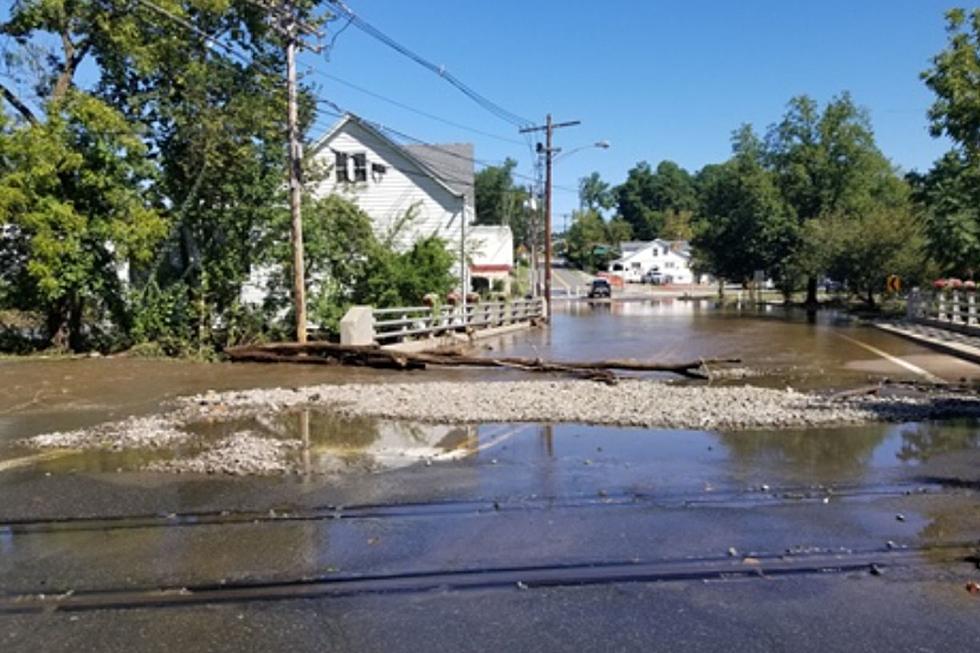
Ida freed dangerous NJ zoo animals and other urban legends
I wonder if every natural disaster has its urban legends.
Scenes from some New Jersey towns Thursday where floodwaters already receded leaving mud covering streets reminded me of my childhood. As a very little kid my parents took me to Wilkes-Barre, Pennsylvania after the Susquehanna River flood in the 1970’s. It was all a result of mighty Hurricane Agnes. I was so young I don’t remember much. But my mom had family there. Most of my aunts and uncles were flooded up to their second floors and were suddenly homeless. My folks went to help with the clean up. Long days literally shoveling mud out of living rooms and carrying other neighbors’ debris out of their own homes.
I was so young I lamely tried to help. Probably what amounted to a Playskool toy shovel but I did do my part. I remember that mud. The streets became a monochrome sepia. The mud line went up second story window sills and you could tell, of course, that’s where the floodwater had crested.
I remember the curfew warnings about the National Guard being in the streets to prevent looting. I remember my family’s heartbreak.
And probably the only other thing I remember was the creepy urban legend (I’m certain now it had to be fake) about the widower.
Story had it a man in town was a real miserable bastard to his wife. Used to get drunk, shove her around, emotionally abuse her, etc.. When she was dying she used to bitterly say she was going to come back and haunt him.
According to the story she died a few years before the flood. The widower then lived alone, still drank, then lost all his possessions in the Susquehanna flood. Like many he went back to what was left of his home to see if it was salvageable. In his kitchen was a back door that led to a back porch.
The flood was so strong, the story went, that it unearthed some of the plots at the cemetery where the wife was buried. Coffins with bodies inside literally floated away.
So when he went to open that back door, what did he find on the porch? His dead wife, in her casket, the lid flipped open, with her decaying body staring right at him and wearing the dress he buried her in.
He went mad, ran back inside, and was found days later having hung himself by a noose in the living room.
So does every natural disaster come with its own urban legend? Perhaps.
Take what was all over social media here in New Jersey. Story had it that the deadly lashing the Garden State just took from Ida’s remnants broke down the fencing and habitat infrastructure at West Orange’s Turtleback Zoo. Meaning, of course, wild animals were released from their enclosures and would be found wandering the state.
Twitter users were busy posting a message from NJ34777 concerning fleeing zoo animals including gorillas, lions and bears.
The Turtleback Zoo does not even have gorillas!
Essex County Executive Director Joseph DiVincenzo called the story “unequivocally false” in an official statement. He pointed out that before the storm even hit all animals were secured indoors for their safety and staff remained at the zoo throughout the ordeal to make certain all was okay.
Reminds me of the old urban legend surrounding wild animals loose from the closure of Jungle Habitat. Legend had it that the drive-thru safari closed down so hastily in 1976 that some animals were left behind and ran loose in the woods. Stories persist to this day of people believing they see baboons, ostriches, etc. in the West Milford area and they are the descendants of the abandoned animals.
According to weirdnj.com, it just isn’t true that animals were left behind when the attraction closed.
The post above reflects the thoughts and observations of New Jersey 101.5 talk show host Jeff Deminski. Any opinions expressed are Jeff Deminski's own.
Hurricane Ida damage in New Orleans & The Gulf Coast
Beautiful sunflower fields to visit in NJ 2021
Point Pleasant Beach NJ: 11 most popular spots
More From New Jersey 101.5 FM









